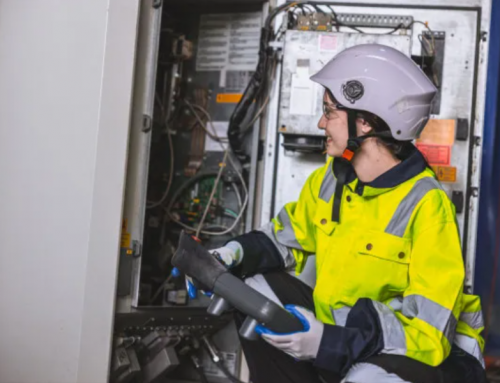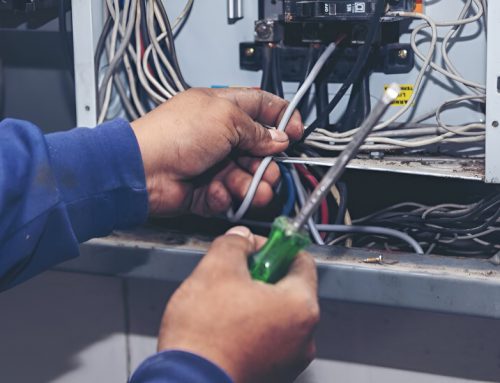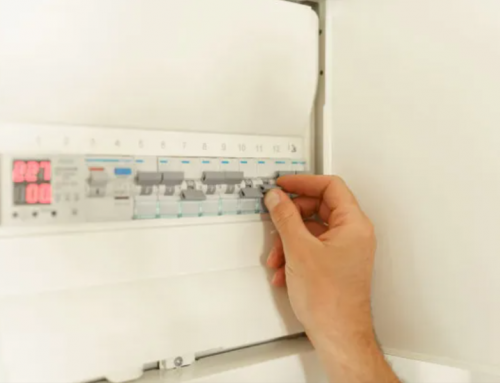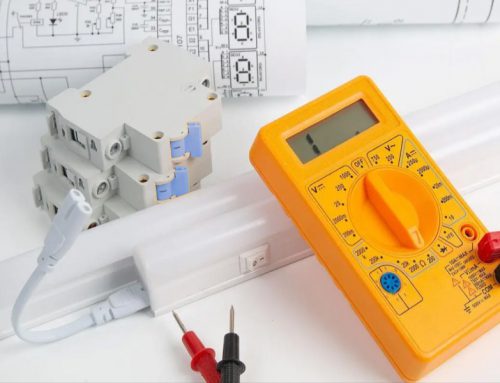Can you replace a circuit breaker without turning off the main breaker?
- 1.Introduction.
- 2.Circuit breaker and main circuit breaker.
- 3.Can the circuit breaker be replaced without closing the main circuit breaker?
- 4.Risks and challenges of replacing circuit breakers without closing the main circuit breaker.
- 5.Safety knowledge required for replacing circuit breakers.
- 6.Advice.
- Conclusion
- References
- Appendix
1.Introduction.
This article will introduce the concepts of circuit breakers and main circuit breakers to readers, and explain why it is necessary to close the circuit breaker first when replacing it. At the same time, this article will also explore the safety knowledge required for replacing circuit breakers, elaborate on how to replace circuit breakers, and analyze the risks and challenges faced by not closing the main circuit breaker when replacing circuit breakers.
2.Circuit breaker and main circuit breaker.
Q: What is a circuit breaker?
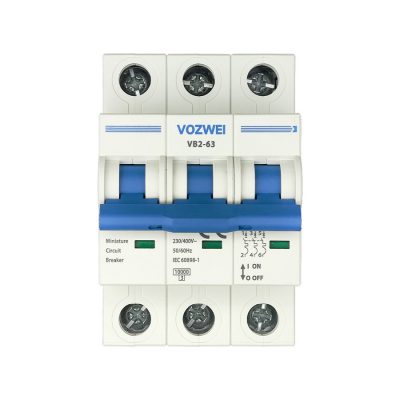
A: A circuit breaker is a protective switch used to cut off the flow of current in an electrical system. Its function is to protect electrical equipment and personnel from damage caused by electrical events such as overloads, short circuits, and ground faults.
According to different application scenarios and requirements, circuit breakers can be classified into various types. For example, air circuit breakers, oil immersed circuit breakers, SF6 gas circuit breakers, fuses, etc. Among them, air circuit breakers are the most basic and common type of circuit breakers, mainly used to protect low-voltage circuits. Oil immersed circuit breakers are suitable for high voltage circuits and require filling with insulating oil after installation. SF6 gas circuit breakers are suitable for ultra-high voltage circuits or high-voltage DC circuits. Finally, fuses are typically used in low-power and lighting circuits to protect wires and components in the circuit.
In terms of working principle, the basic principle of circuit breakers is to use the magnetic field of induced current to activate the mechanism. When a fault occurs in the circuit, the circuit breaker will cut off the circuit in a timely manner to avoid damage to electrical equipment or personal injury. Specifically, the electromagnetic mechanism in the circuit breaker senses changes in current, and when the current reaches a preset value, the mechanism will activate, causing the switch to isolate and cut off the circuit. While disconnecting the current, the circuit breaker can also generate arc light and eliminate it in a short period of time.
In short, circuit breakers are a very important component in the electrical system, which can protect power equipment and personnel from electrical events such as overloads, short circuits, and ground faults. According to different application scenarios and requirements, we can choose different types of circuit breakers to use. Its working principle is based on the magnetic field of induced current and utilizes the principles of mechanism activation and switch isolation circuits.
Q: What is the main circuit breaker?

A: The Main Circuit Breaker is a critical protective device used in electrical systems to control and cut off the current in the circuit. It is usually installed at the beginning of the circuit and has manual or automatic operation functions to cut off or restore power supply as needed.
The role of the main circuit breaker is very important, as it plays two main roles in the electrical system: overload protection and short circuit protection.
Firstly, the main circuit breaker is used for overload protection. When the circuit load exceeds its rated capacity, an overload situation occurs, and the main circuit breaker will quickly cut off the circuit to prevent excessive current from damaging the equipment or causing a fire. Overload is usually caused by excessive load or power consumption connected to the circuit, and the main circuit breaker can detect and respond to abnormal changes in current. Once an overload occurs, the main circuit breaker will quickly open the circuit, cut off the current flow, and protect the circuit and equipment from damage.
Secondly, the main circuit breaker is used for short-circuit protection. Short circuit is a fault that occurs in a circuit, usually caused by poor wire contact, equipment failure, or insulation failure. Short circuits can cause a rapid increase in current in the circuit, which may cause serious damage or even fire. The main circuit breaker can quickly detect short circuits and cut off the circuit to stop current flow. Its response speed is very fast, usually triggering a circuit breaker operation within a few milliseconds, ensuring maximum protection of the circuit and equipment.
The main circuit breaker also has a manual operation function to cut off the power supply in case of emergency, maintenance or repair. By manually operating the main circuit breaker, the power to the entire electrical system can be quickly cut off, ensuring a safe operating environment and maintenance conditions.
In addition, the main circuit breaker also has additional functions and characteristics, such as overcurrent protection, ground fault protection, and electrical isolation. The overcurrent protection function can be adjusted according to different load requirements to achieve more precise protection. Ground fault protection can monitor and cut off current leakage caused by equipment insulation faults. The electrical isolation function enables the main circuit breaker to provide reliable isolation when disconnecting the circuit and ensure the safety of operators.
In summary, the main circuit breaker, as a key protective device in the electrical system, undertakes important tasks of overload protection and short circuit protection. It can quickly detect and respond to abnormal current conditions, cut off circuits to protect the safe operation of equipment and systems. The main circuit breaker also has manual operation function and other additional features to meet the needs of different situations. By properly installing and using the main circuit breaker, the stability, safety, and reliability of the electrical system can be effectively guaranteed.
Q: The relationship between the main circuit breaker and the circuit breaker.
A: Main Circuit Breaker and Circuit Breaker are two different types of protective devices in electrical systems.
The main circuit breaker is a key protective device in the entire electrical system, usually installed at the starting position of the circuit, responsible for controlling and cutting off the current in the circuit. It has manual or automatic operation functions and can cut off or restore power supply as needed. The main circuit breaker is mainly used for overload protection and short circuit protection, and is commonly used in large electrical systems or main power supply lines. It usually has high breaking capacity and rated capacity, and can withstand larger current loads.
A circuit breaker is a broad term that refers to a device used to protect a circuit from overcurrent and short-circuit faults. Circuit breakers include various types, such as low-voltage circuit breakers, medium voltage circuit breakers, high-voltage circuit breakers, etc. Their rated voltage and breaking capacity are different and suitable for different circuits and equipment. Circuit breakers can be divided into various types, such as fuse type circuit breakers and magnetic circuit breakers, and have the function of automatically cutting off circuits.
Therefore, main circuit breaker and circuit breaker are two interrelated but slightly different terms in concept. The main circuit breaker is a specific type of circuit breaker that controls and cuts off the current in the entire electrical system, with high capacity and breaking capacity; A circuit breaker is a broader concept that refers to various types of protective devices, including circuit breakers with different working principles such as fuse type and magnetic circuit breaker type.
3.Can the circuit breaker be replaced without closing the main circuit breaker?
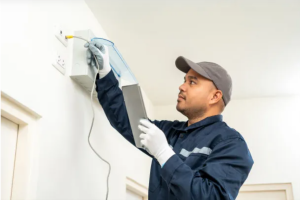
Before replacing the circuit breaker, it is necessary to first cut off the power supply, that is, turn off the main circuit breaker. This is because the circuit breaker needs to be completely cut off during the replacement process to ensure safety. Closing the main circuit breaker can cut off the power supply of the entire electrical system and prevent current from passing through the circuit breaker, thus ensuring the safety of the replacement process.
Only after closing the main circuit breaker can the original circuit breaker be safely disassembled and a new circuit breaker be installed. When replacing a circuit breaker, it is also necessary to pay attention to correctly selecting a new circuit breaker that matches the circuit requirements, including parameters such as rated voltage, rated current, and breaking capacity. After installing the new circuit breaker, reconnect the main circuit breaker and restore power supply.
It should be emphasized that when replacing circuit breakers, especially when involving high-voltage or complex electrical systems, professional electrical technicians should be responsible for the operation. They understand the correct safety procedures and operating procedures, and possess the necessary skills and knowledge to ensure smooth operation and ensure the safety of the electrical system.
In summary, in order to ensure personal safety and the safe operation of the electrical system, it is necessary to turn off the main circuit breaker to cut off the power supply before replacing the circuit breaker. This can ensure that there is no risk of electric shock caused by the passage of current when replacing the circuit breaker, and provide a safe operating environment.
4.Risks and challenges of replacing circuit breakers without closing the main circuit breaker.
If the circuit breaker is replaced while the power is on, it may cause electric shock or even fatal injury. Due to the presence of current in the circuit, touching the circuit or improperly connecting wires can easily cause electric shock.
When replacing the circuit breaker, it is necessary to disconnect the circuit and connections, which may cause damage to other electrical equipment. If a short circuit or arc flash occurs during the replacement process, it may cause serious damage to the surrounding electrical equipment.
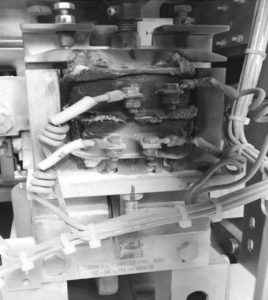
Replacing the circuit breaker under constant power may have an impact on the entire electrical system and lead to instability. Replacing a circuit breaker can cause circuit interruption and reconnection, which may lead to sudden changes in voltage and current, thereby affecting the stability of the entire electrical system. In addition, if the replaced new circuit breaker does not match the original circuit breaker parameters or is installed incorrectly, it may also cause electrical system problems.
In short, replacing a circuit breaker is a very dangerous and complex task. If carried out without the main circuit breaker closed, it may pose potential risks and challenges to personal safety, electrical equipment, and the entire electrical system. Therefore, before replacing the circuit breaker, it is necessary to close the main circuit breaker and follow the correct steps and procedures.
5.Safety knowledge required for replacing circuit breakers.
Replacing a circuit breaker is an electrical operation involving high voltage and high current, which requires mastering some necessary safety knowledge to ensure the personal safety of operators and the safe operation of the electrical system. Here are some safety knowledge required for replacing circuit breakers:
(1). Understand relevant knowledge of electrical systems:
Before replacing the circuit breaker, it is necessary to have a certain understanding of the electrical system to be replaced. Necessary knowledge includes the components and circuit structure of the electrical system, rated voltage and rated current, as well as the connection methods between various components. These understandings can help operators better grasp the safety measures during the operation process and carry out replacement operations without damaging the electrical system.
(2). System power outage:
When replacing the circuit breaker, it is necessary to first cut off the power supply of the main circuit breaker to ensure that the electrical system is in a completely powered off state. This is the foundation for ensuring the safety of operators. It is prohibited to use only small circuit breakers to cut off the power supply of strong current lines, as there is a risk of electric shock. If necessary, specialized electrical tools can be used for the work.
(3). Wear appropriate personal protective equipment:
Operators need to wear appropriate personal protective equipment when replacing circuit breakers, such as insulated gloves, insulated boots, insulated clothing, safety helmets, goggles, etc. These protective equipment can reduce the contact between operators and high-voltage current, reducing the risk of electric shock.
(4). Standardized operating procedures:
When replacing the circuit breaker, strict operating procedures must be followed and the operating sequence must not be changed or bypassed at will. Operators should plan the operation process in advance, fully consider potential problems in various situations, and take corresponding measures to respond.
(5). Disconnect and lock the power supply:
Before disconnecting the circuit breaker or secondary wiring of a certain section of the circuit, the main circuit breaker should be closed and locked to avoid the risk of electric shock caused by misoperation and high current passing through.
(6). Use the correct tools and materials:
Special tools and materials are required when replacing circuit breakers. Choosing the appropriate tools can improve operational efficiency, while selecting the appropriate materials can ensure the reliability of circuit breakers after replacement, thereby ensuring the safe operation of the electrical system.
In short, replacing a circuit breaker is an electrical operation that requires careful consideration, as it requires mastering corresponding safety knowledge and skills, fully understanding the relevant knowledge of the electrical system, and complying with safety operating procedures. Only in this way can the personal safety of operators and the safe operation of the electrical system be ensured.
How to replace circuit breakers?
6.Advice.
a. Professional electrician assistance should be sought in the following situations:
(1).The voltage, capacity, and other parameters of the circuit breaker to be replaced are complex and require professional electricians to replace it.
(2). There is already a malfunction or other electrical issue in the system.
(3). The working environment is relatively dangerous, such as high work height, narrow space, or other potential risks.
(4). Other related electrical work needs to be carried out, and systematic planning and coordination are required.
b. Non professionals need to pay attention to the following limitations and risks when carrying out electrical work:
(1).For beginners, knowledge and skills in electrical work are relatively lacking.
(2).Improper operation may cause safety issues such as electric shock and fire.
(3). If errors or unexpected situations occur during the operation process, it may lead to system failure or even paralysis of the entire electrical system, thereby causing damage to equipment and personnel.
c. When carrying out any electrical work, safety is always the most important. The following key aspects must be ensured:
(1). Before operation, disconnect the main power supply and confirm that there is no more current flowing through the circuit.
(2). Use appropriate tools and equipment, and wear personal protective equipment, such as insulated gloves, safety shoes, etc.
(3). Comply with correct procedures and procedures, and be supervised and guided by personnel present.
(4). Always remain vigilant during operation to promptly handle any unusual situations.
In short, both professional electricians and non professionals must be aware of their scope and limitations before conducting electrical work, and take appropriate measures to ensure safety.
Conclusion
During the process of replacing the circuit breaker, failure to close the main circuit breaker can lead to risks such as electric shock injury and electrical system instability. Therefore, before conducting electrical work, it is important to follow the correct steps and procedures, and always prioritize safety.
Both professionals and non professionals should always prioritize safety when carrying out electrical work. Ensure careful planning and preparation in advance, and take appropriate measures to protect oneself and surrounding personnel. If you want to better understand how to carry out electrical work or have any questions, please be sure to seek the help of professional technical personnel.
References
Appendix
Circuit:The complete closed path through which a current can pass.
